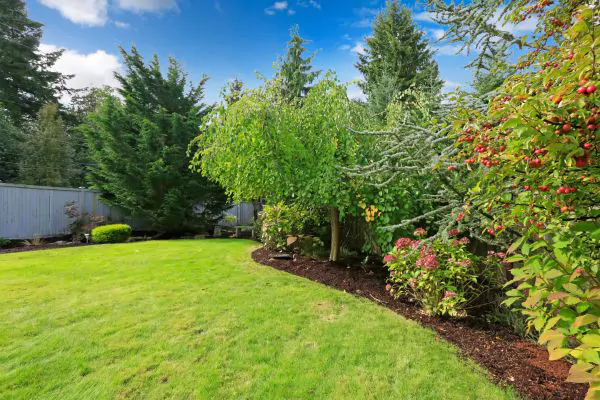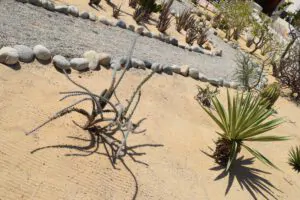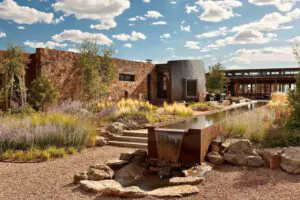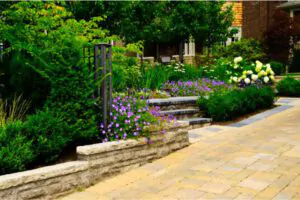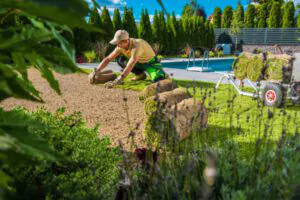Are you tired of looking at your dry, brown lawn in the middle of the scorching desert summer? In a dry climate, keeping a luscious and vibrant yard can be difficult, particularly when picking the correct kind of vegetation. Determining what sort of grass is appropriate for your requirements can be intimidating with so many options available, each having benefits and drawbacks.
In this blog, we’ll explore the four best desert grass types and offer tips for planting and maintaining each one. Whether you prefer Bermuda, Zoysia, Buffalo, or St. Augustine grass, we’ve got you covered with everything you need to know to create a green oasis amid the desert heat.
Bermuda Grass
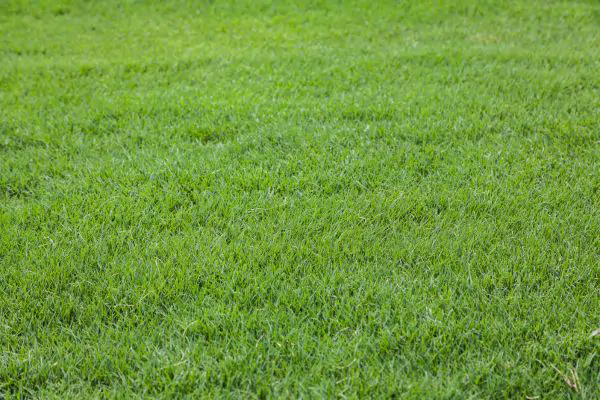
First on the list of the best types of grass for landscaping is Bermuda. Bermuda grass (Cynodon dactylon) is one of the best grasses for desert climates due to its heat tolerance and drought resistance. It is a grass native to Europe, Australia, Africa, and some parts of Asia. It is a toasty grassland that is ideal for arid conditions since it grows well in warmer, sunny places. Here are some of the characteristics, advantages, and disadvantages of Bermuda grass for desert landscaping:
Characteristics of Bermuda Grass
● Fine-textured, dense turfgrass
● Bright green color
● Proliferates and spreads through runners
● Tolerates heat and drought well
● Can handle heavy foot traffic
Advantages
● Tolerates extreme heat and drought
● Requires less water than other grass types
● Proliferates and fills in bare spots easily
● Resistant to pests and diseases
● Maintains color and texture year-round
Disadvantages
● Can be invasive and difficult to control
● Goes dormant in the winter months
● Needs frequent mowing to keep it from becoming too long
● Requires more frequent fertilization than other grass types
● May turn brown during extended periods of extreme drought
Tips for Planting and Maintaining Bermuda Grass in a Desert Climate
1. Plant Bermuda grass during the late spring or early summer when the soil is warm, and the grass will have plenty of time to establish itself before winter dormancy.
2. Water Bermuda grass deeply but infrequently, encouraging profound root growth.
3. Mow Bermuda grass regularly, keeping the blades at 1 to 2 inches.
4. Fertilize Bermuda grass in the spring and summer with a slow-release fertilizer to promote healthy growth.
5. Post-pesticides are applied in the autumn and spring to suppress weeds, and post-emergent herbicides are spot-treated on any apparent weeds.
Zoysia Grass
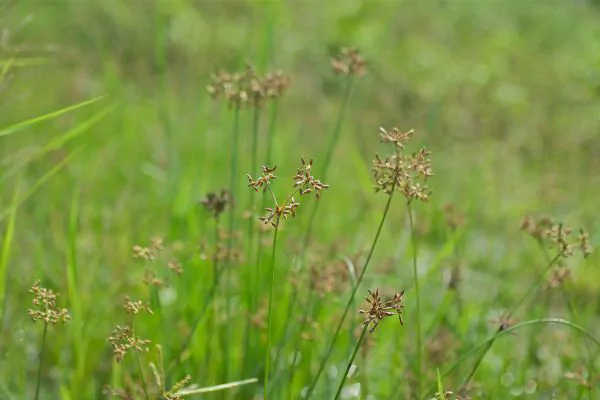
Zoysia grass is a warm-season grass known for its ability to withstand drought and heavy foot traffic. It is famous for lawns, golf courses, and sports fields.
Characteristics of Zoysia Grass
● Has a slower growth rate than other warm-season grasses
● Can tolerate high temperatures and drought conditions
● Grows in partial shade, making it a good choice for areas with some tree cover.
● Has a dense growth pattern, which makes it suitable for withstanding heavy foot traffic.
● Requires less maintenance than other grasses, making it an attractive option for homeowners.
Advantages
● Can survive on less water than other grasses. This makes it the best grass for dry climates.
● Dense growth pattern of Zoysia Grass makes it resistant to wear and tear.
● Requires less maintenance than some other grasses.
● Able to withstand heavy foot traffic makes it a popular choice for sports fields and golf courses.
● Is well adapted to hot and dry environments.
Disadvantages
● Slow growth rate of Zoysia grass means that it takes longer to establish a lawn.
● Not well suited for heavily shaded areas.
● Can be susceptible to disease, particularly in humid climates.
● Is not well adapted to cold climates.
● Can spread quickly and be difficult to control.
Tips for Planting and Maintaining Zoysia Grass in a Desert Climate
1. Make sure you choose a Zoysia grass variety adapted to your climate. In desert climates, you’ll want a drought-tolerant and heat-resistant variety.
2. Zoysia grass prefers well-draining soil, so prepare the ground by adding organic matter and aerating it before planting.
3. Zoysia Grass can survive on less water than other grasses, but it still needs regular watering. Water deeply and infrequently to encourage profound root growth.
4. Be cautious not to over-fertilize because this grass does not require as much manure as other types of grass. Use a slow-release fertilizer and apply it in the spring and summer.
5. Zoysia Grass should be mowed to 1-2 inches in desert climates. Cutting too short can stress the grass and make it more susceptible to disease.
Buffalo Grass
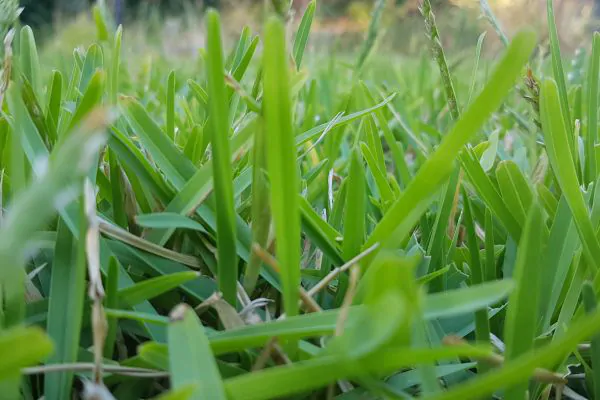
Buffalo grass (Buchloe dactyloides) is a warm-season grass native to North America. It is a popular lawn choice, especially in the Great Plains and southwestern United States. Buffalo grass is one of the greatest desert grasslands for gardening because of its smooth finish, resistance to dryness, and relatively inexpensive needs.
Characteristics of Buffalo Grass
● Buffalo grass is a warm-season grass that goes dormant and turns brown in the winter.
● Has a fine-textured blade that is soft to the touch.
● Low-growing, reaching a maximum height of 6 to 8 inches.
● Shallow root system makes it drought-tolerant and susceptible to weed invasion.
● Buffalo grass is a slow-growing grass that requires infrequent mowing.
Advantages
● Drought tolerant
● Low-maintenance requirements
● Resistant to pests and disease
● Fine texture and soft to the touch
● Can grow well in sandy and alkaline soil
Disadvantages
● Slow-growing can take longer to establish
● The shallow root system makes it susceptible to weed invasion
● Less tolerant of heavy foot traffic
● Not ideal for areas with high humidity
● It can turn brown during the winter months
Tips for Planting and Maintaining Buffalo Grass in a Desert Climate
1. Prepare the ground by removing rocks, debris, and weeds, and amend it with compost or organic matter to improve soil quality.
2. Water regularly but deeply until the grass is established. After that, reduce the watering frequency to once every two weeks or as needed based on soil moisture.
3. Keep the grass at 2 to 3 inches, and mow only when the grass reaches a height of 4 to 5 inches.
4. Fertilize in the spring and summer with a low-nitrogen fertilizer to promote healthy growth.
5. Control weeds by hand-pulling or spot-treating with a safe herbicide for buffalo grass.
St. Augustine Grass
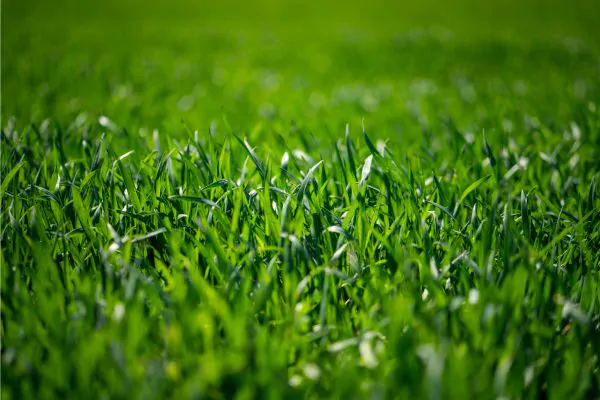
St. Augustine grass is a warm-season grass commonly found in tropical and subtropical regions. It is known for its dense, lush growth and tolerance for shade. This grass is a popular lawn choice in the southern United States because of its durability and low maintenance requirements.
Characteristics of St. Augustine Grass
● St. Augustine grass has broad, flat leaves with a blue-green color.
● Has a dense growth habit that creates a thick, lush lawn.
● Tolerates shade better than other warm-season grasses.
● Is a fast-growing grass that can quickly fill in bare spots in a lawn.
● May need regular irrigation during dry spells since it is less drought-tolerant than other warm-season grasslands.
Advantages
● Dense growth habit creates a thick, lush lawn
● Tolerates shade better than other warm-season grasses
● Fast-growing and can quickly fill in bare spots in a lawn
● Low maintenance requirements
Disadvantages
● Not as drought-tolerant as other warm-season grasses
● Susceptible to diseases and pests, such as chinch bugs and brown patch
● Requires regular mowing and fertilization to maintain its appearance
● It can be expensive to install compared to other types of grass
Tips for planting and preserving St. Augustine Grass in a desert climate
1. When it’s cooler outside and there’s additional moisture, cultivate in the autumn or springtime.
2. Choose a variety of St. Augustine grass adapted to desert climates, such as Floratam or Raleigh.
3. Regular watering will maintain the soil hydrated, but excessive watering should be avoided since it might cause fungus problems.
4. Fertilize with a balanced fertilizer every 6-8 weeks during the growing season.
5. Mow regularly, but never remove more than one-third of the grass blade at a time to avoid stress on the grass.
Related article: What Plants Do Well in New Mexico?
Conclusion
Places with desert climates can be challenging to maintain grass, but with the right species and proper care, it is possible to have a healthy, lush lawn. The grass types we highlighted in this article are four of the best for hot, dry climate areas like Espanola, NM, because they can tolerate extreme temperatures and require minimal maintenance. With careful preparation and regular upkeep, you can keep these types of grass that grow in dry conditions thriving for the years to come.
Always check with your local landscaper professionals for more landscaping advice on selecting suitable grass for your climate and soil conditions. No matter where you reside, by using these suggestions, you are going to be well on your way to an inviting, beautiful garden!

